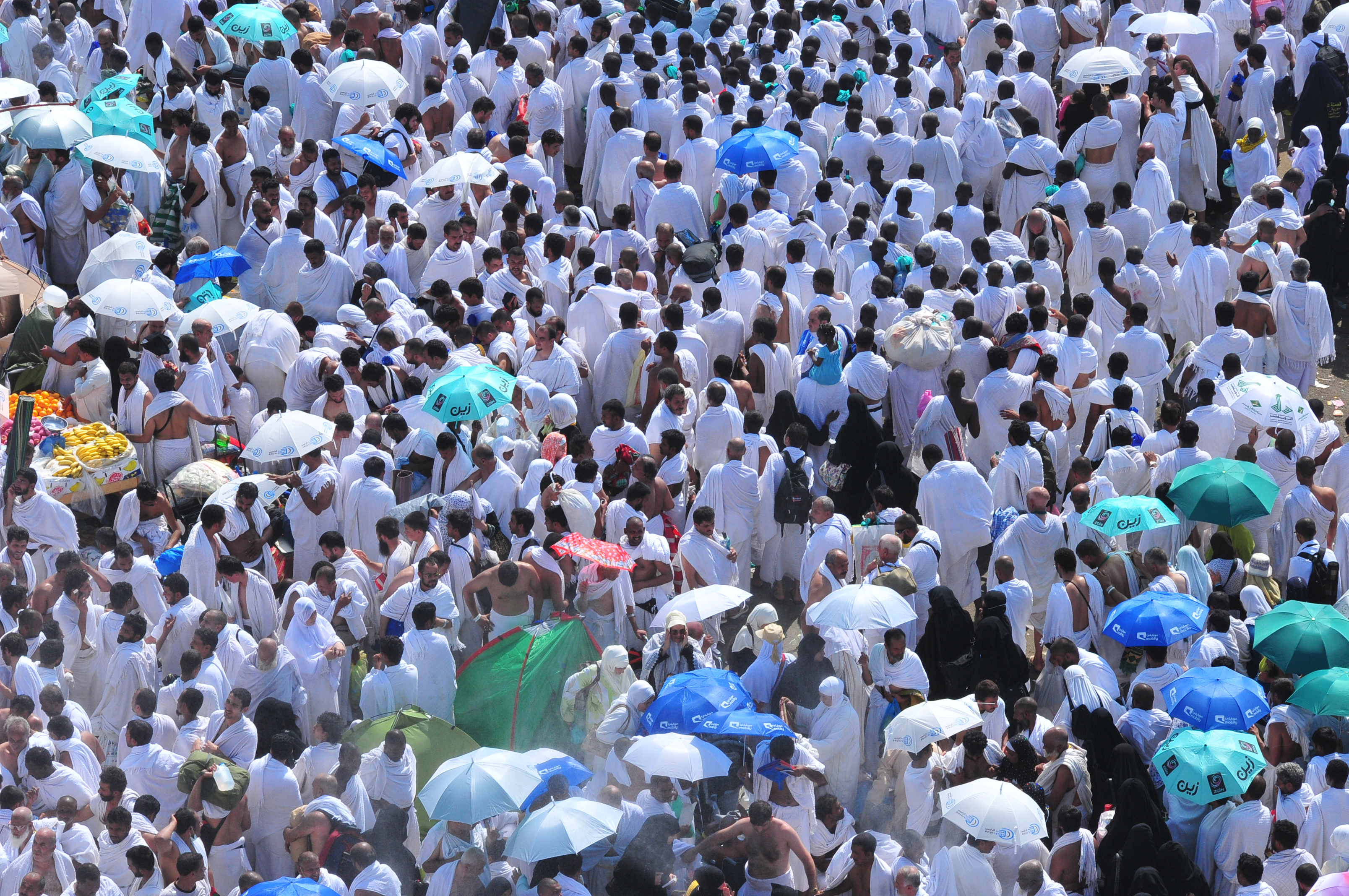
(Photo: Fadi El Binni/Creative Common)
Hajj is one of the most important religious duties for Muslims. This year, 2 million pilgrims attended, and those numbers don’t include Umrah, the non-mandatory pilgrimage.
A recent study conducted by Massachusetts Institute of Technology (MIT) researchers revealed that climate change could make it increasingly dangerous for people to perform the rite of Hajj, especially during summer months, due to ever-increasing temperatures.
Hajj requires participants to be outdoors for between 20 and 30 hours during the 5-6 days it takes to complete the rituals.
Since the 1970s, the Middle East has seen steady increases in average surface temperatures and a higher frequency of extreme heat events. It is widely accepted that these increases are the result of greenhouse gas emissions, which have led to climate change.
The study looked at wet-bulb temperatures as a way to see how effectively sweating can keep the body cool. Wet-bulb temperature is, essentially, a measure of ‘mugginess.’ The researchers made projections based on ‘business as usual’ temperature trends as well as temperature projections that accounted for mitigation efforts to reduce greenhouse gas emissions that were slightly less ambitious than those put forth in the UNFCCC’s Paris Climate Agreement.
The results projected that the level of danger to pilgrims who participate closer to the end of the century will be quite high, especially when Hajj falls in the summer months.
During two Hajj pilgrimages in the last 30 years – one in 1990 and the other in 2015, stampedes broke out that killed thousands of people – both happened in the peak warm years that exceeded the US National Weather Service’s danger threshold.
Though a direct correlation cannot be made with certainty, it has been shown on numerous occasions that climate change tends to exacerbate conflict.
This year, Hajj took place in August, and temperatures in Makkah averaged 43°C, but officials warned that they could peak at 50°C. The MIT study suggests that the Government of Saudi Arabia impose restrictions on permits to reduce the number of participants per Hajj.
Already Saudi Arabia only grants Hajj permits to returnees every 5 years, as it would be unfair to crowd the pilgrimage with people of means who can afford to partake in the rite more frequently.
The study concluded that “The human health risk during Hajj depends on both the intensity and duration of the natural hazard as well as the level of vulnerability of the pilgrims in any specific year.
The factors that shape this vulnerability include structural factors such as the capacity of the Hajj facilities and quality of transportation logistics and non-structural factors such as the age distribution, health, and [the] number of pilgrims.” Many pilgrims will likely prefer to attend during non-summer months and, therefore, during those years, the structural challenges may be intensified.
The hottest months in the coming century, when Hajj will take place, will be between 2047 and 2052 and from 2079 to 2086. Dry-bulb (regular temperature) and wet-bulb temperatures are expected to increase as the century progresses.
The difference in projections between ‘business as usual’ and mitigation efforts was significant, especially in the latter part of the century. The study stated that “Any mitigation efforts favouring something similar to or more robust than RCP 4.5 [mitigation] will likely have significantly positive impacts by reducing the projected heat stress intensity and frequency.”
If Saudi Arabia took measures to restrict first-time Hajj pilgrims, there would likely be a public outcry. Many participants are in the latter part of their lives and look forward to finally fulfilling their religious duty. If entry permits were restricted, some Muslims may never get the chance to attend.
Still, each year hotter temperature brings greater risks to human life and with it a higher chance of conflict. Hajj is one of the largest human pilgrimages in the world. It is meant to be peaceful, spiritual; participants are willing to endure immense stressors to complete their religious duty admirably, but how much risk to human health is too much?
Saudi Arabia may also be reluctant to restrict too many permits, as Hajj contributes $12 billion to the country’s GDP. Steps have been taken to help people endure the scorching temperatures, including water misters in some outdoor locations, but there will need to be more proactive measures taken to mitigate and adapt to the temperatures if the Saudi Government seeks to keep the authenticity of the ritual intact, while also protecting human life.
Sarah Sakeena Marshall,
English Language Teacher,
Environmental Columnist